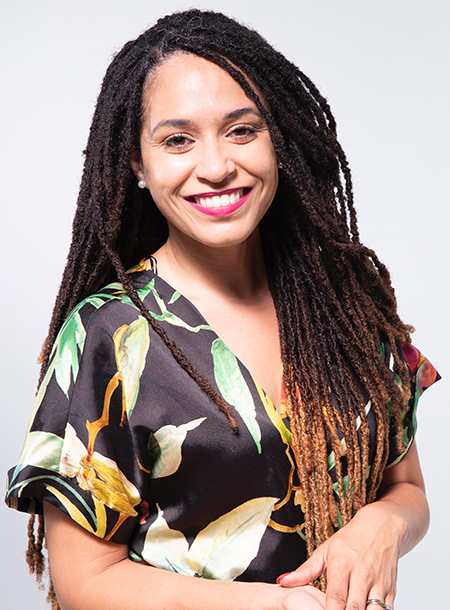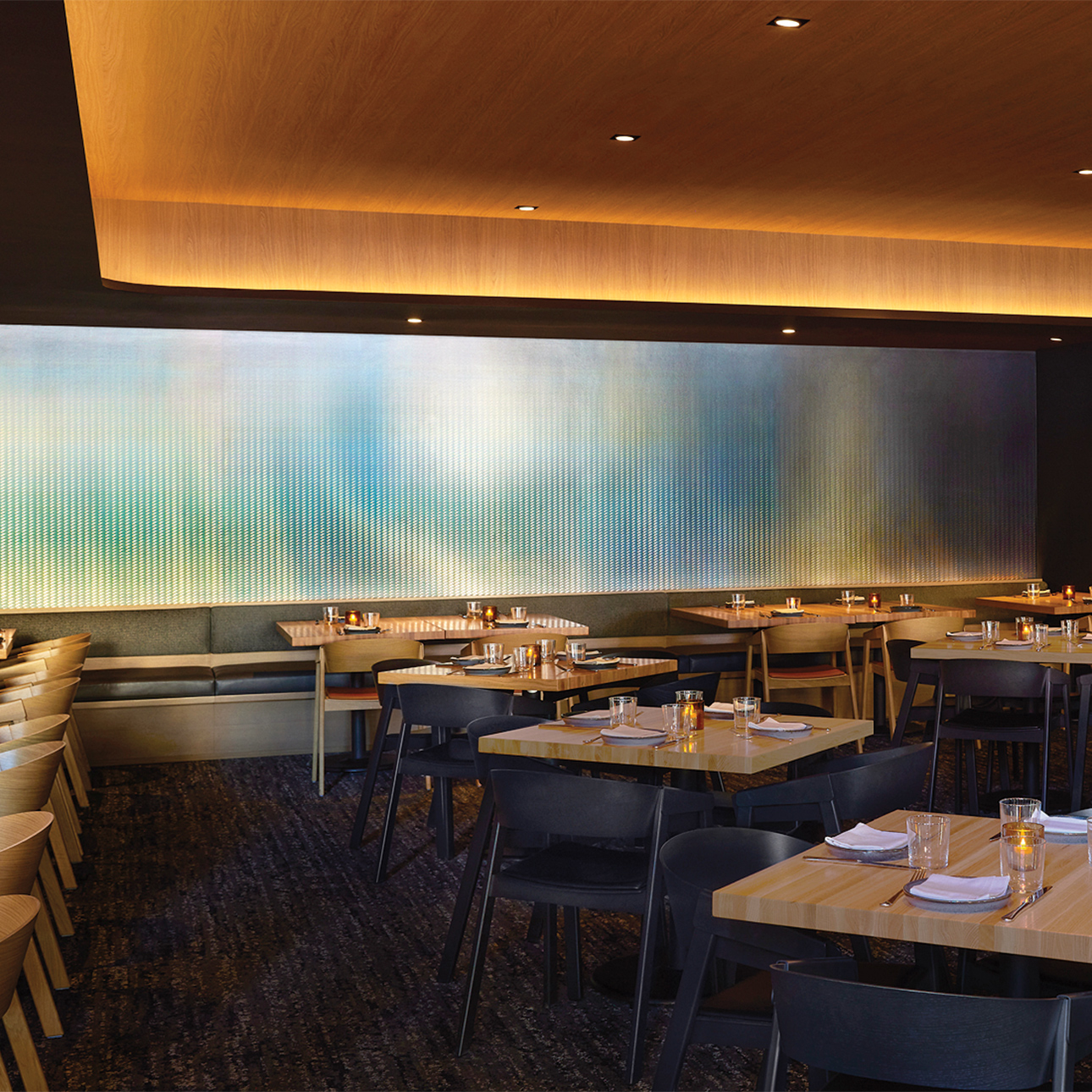As you walk into asterid by Ray Garcia — a Michelin-starred restaurant nestled in the Walt Disney Concert Hall in downtown Los Angeles — a warm, yellow glow illuminates the underside of the bar. Along the walls, recessed lights shine softly against an ethereal blue backsplash, creating the illusion of flowing water.
Lauren Dandridge Gaines ’04 is co-founder and principal of Chromatic, the Los Angeles–based lighting design firm behind asterid’s new look. She also teaches courses on lighting design at the University of Southern California School of Architecture.

Lauren Dandridge Gaines
Think of a building as a human body, she says. “Lighting is the soul. You’re providing an experience. You can be in the most beautifully decorated place, but if the color [or placement] of the light is [wrong], then the optics don’t work.”
Dandridge majored in theater at Northwestern, where she became fascinated by the possibilities of stage lighting. After graduation, she worked for several design firms as a lighting consultant.
“The architectural lighting industry … is incredibly accessible,” she says. “It’s [full of] people like me who did not go to school for architecture but have … theater or entertainment [backgrounds] and then crossed over into the architectural space.”
Lighting as Social Justice
In 2020 Dandridge was working a sales job when her world turned upside down. People of color began dying at a disproportionate rate due to COVID-19, George Floyd was killed, Black Lives Matter protests swept the country, “and here I was selling light fixtures,” she says.
“I had just had my second baby,” she recalls, “and I was like, ‘What do I do?’ … Donating money isn’t enough. Protesting isn’t enough. Writing letters isn’t enough. … I [felt] like a bad Black mother of two young Black boys. … How am I spending my life not combatting this specific [violence against Black men]?”
She shared her distress with her husband, Andre Gaines ’01, whom she’d first met at Northwestern. “Instead of feeling helpless, we started a conversation [around the question]: How do we use the tools we have?” she says.
“So instead of [thinking], ‘OK, lighting is stupid, and it’s not going to save these young Black men’s lives,’ [I started thinking,] ‘Well, lighting is part of the built environment. How can I create environments that allow people to be safer?’”
Dandridge teamed up with her friend Nick Albert, a lighting design instructor at the UCLA Extension architecture and interior design program, who was already investigating this question. Together they co-founded Chromatic and launched Light Privilege, a project that brings awareness to lighting as a social justice issue.
Neighborhoods that have a majority people of color often experience either overly harsh lighting (creating a sense of surveillance) or not enough lighting (potentially dangerous environments), Dandridge explains. “The idea that more light is safer [is not always the case]. … The privilege of having good light quality is having it both be not too dark but also not overlit.”
Too often, lighting is an afterthought in architectural design work, she says. Now, she’s made it her life’s work to help clients — such as architects, interior designers and building contractors — think about lighting intentionally, to promote healthier, safer, more inviting spaces.
Atmosphere Is Everything
One forthcoming project is particularly meaningful to Dandridge: designing the lighting atmosphere for Birth Detroit, a midwifery nonprofit that plans to open Detroit’s first standalone natural birthing center.
“[Through Chromatic,] we’re trying to provide an environment that [not only] allows Black women to have babies safely but also [allows them to feel] more mentally and physically comfortable,” Dandridge says.
So what role does lighting play?
“A lot of lighting in medical environments is very ‘doctor first,’” Dandridge explains. Think, for instance, how stressful cold, harsh lighting might be for a person who has been in labor for hours and is sleep deprived and anxious. “It is so important to give these women … a space that supports them first.
“We want to promote patient-forward lighting with warm tones, lower mounting positions in the room … something closer to a hospitality experience rather than a hospital,” she says, “something that soothes and promotes comfort.” Chromatic hopes to provide a holistically supportive environment not only for patients in the new facility but also for medical workers.
“There are a couple correlated studies specific to night-shift workers, [indicating that they] have a higher rate of breast cancer,” says Dandridge. “I can’t say blue light causes cancer. … But what I can [gather] from [these studies] is that this is an environmental hazard. … [Night-shift workers are] still being exposed to circadian-rhythm disrupting light for a long period of time.” (More research is needed to investigate the effect of blue light exposure on humans. On the visible light spectrum, blue light has shorter wavelengths and the highest energy level. Computer screens and LED lights commonly emit blue light.)
The Birth Detroit project is still in the design phase. But Dandridge is excited to see it move forward in 2024. “This project speaks to everything that I am and why I wanted to [found] my own firm,” says Dandridge.




Reader Responses
No one has commented on this page yet.
Submit a Response